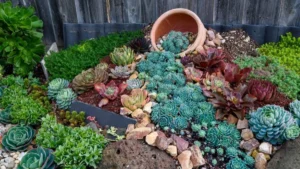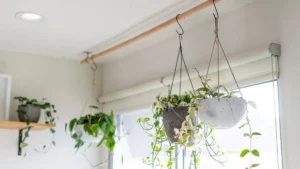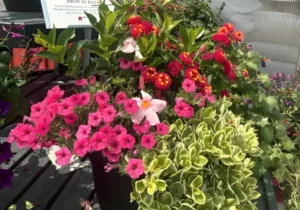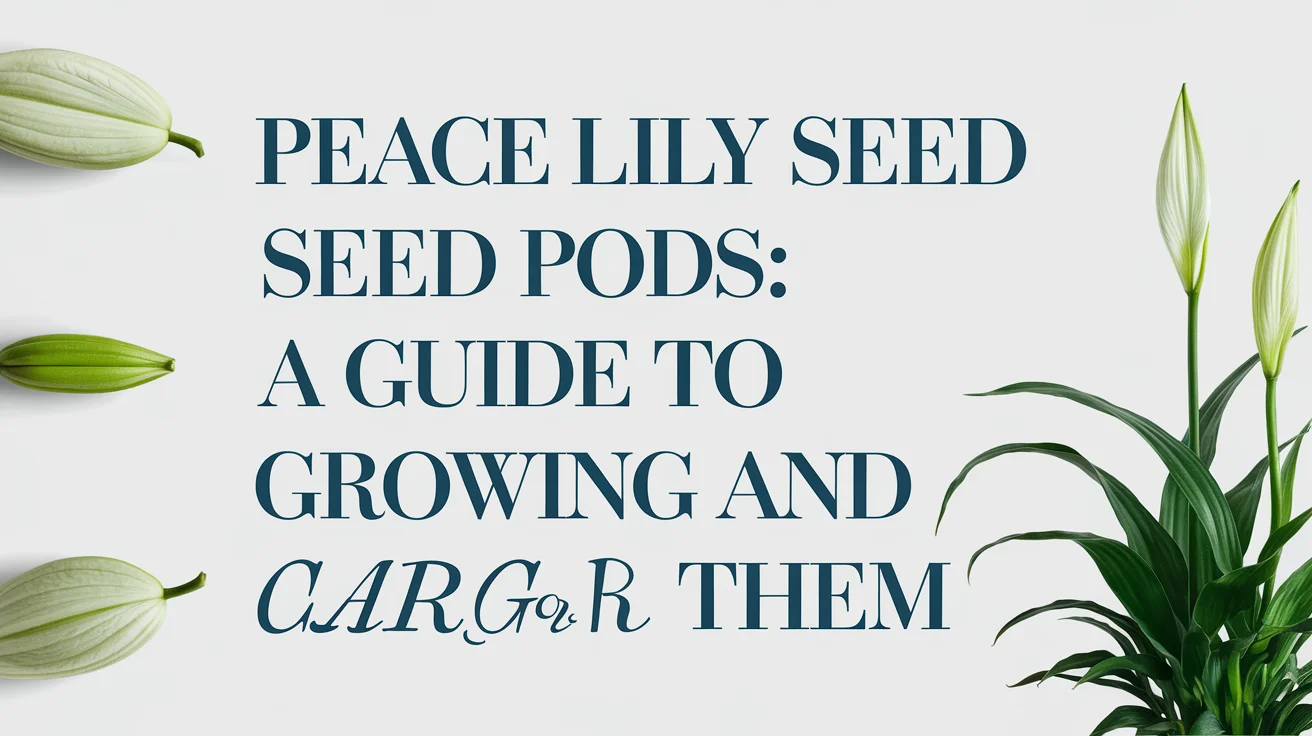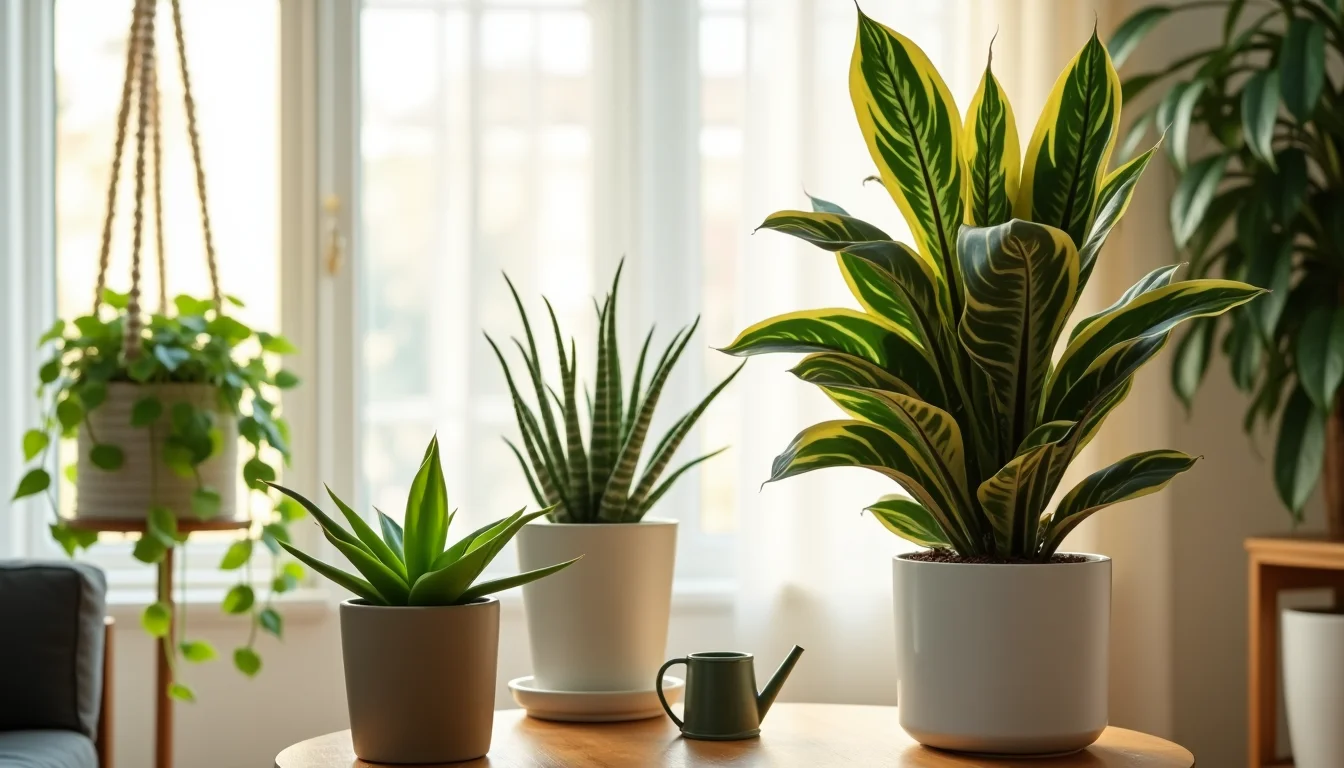The sort of thing I love about nature is how plants reflect green light instead of absorbing it completely. This reveals one of nature’s most intriguing puzzles. Plants absorb almost all photons in the red and blue regions of the light spectrum but reflect about 10% of the green photons, giving them their characteristic green colour.
Plants show a remarkable pattern in how they handle visible light. Chlorophyll captures red light efficiently and converts it to energy, while green light (500-560 nanometers) barely gets absorbed. Recent research points to something surprising – this seemingly inefficient process represents a clever survival strategy. Plants reflect green light to maintain stability in their photosynthetic processes.
Nature doesn’t always aim for maximum efficiency. The rise of photosynthetic machinery in plants focused on ensuring smooth and reliable energy output rather than capturing every possible photon. This delicate balance between energy absorption and stability stands as one of nature’s most elegant compromises.
This piece explores the science behind plant colouration. We’ll look at chlorophyll’s impressive ability to absorb red and blue light, and discover the unexpected advantages that come from letting some green light bounce away unused.
Why plants appear green to our eyes
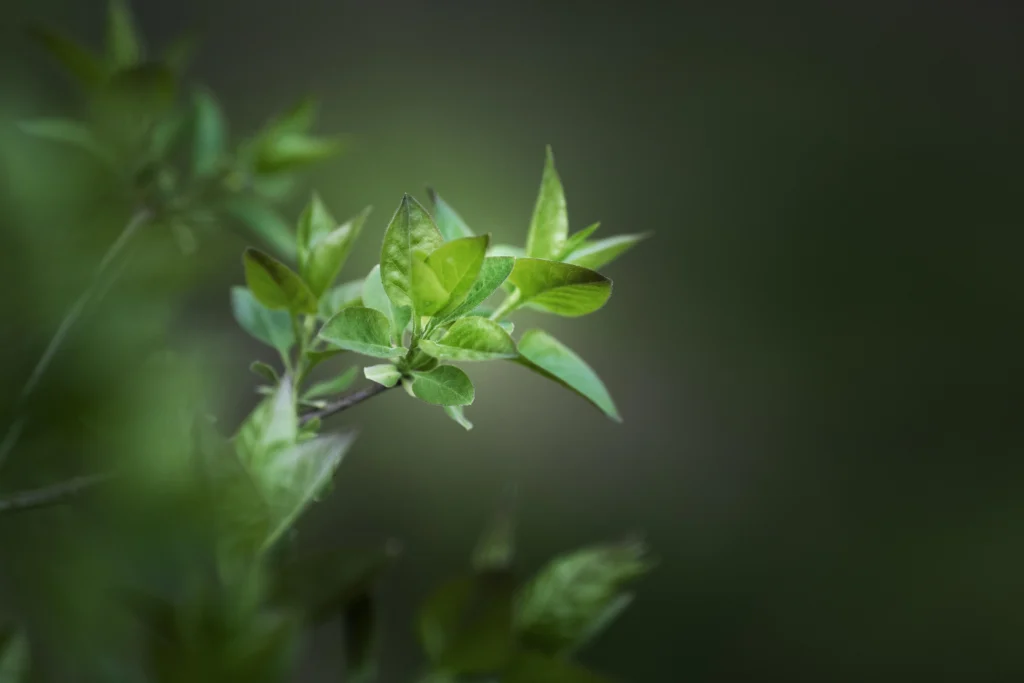
Plants get their mysterious green colour from a fascinating dance between light, pigments, and our eyes. Let’s explore how light works and the way plants interact with it.
How visible light interacts with objects
Light moves in waves, similar to radio waves. Visible light takes up a small part of the electromagnetic spectrum between 400 and 700 nanometers. Sunlight contains all the rainbow colours that combine to create white light. When it hits an object, some wavelengths get absorbed while others bounce back. The wavelengths that bounce off and reach our eyes determine the colours we see.
Our brain’s visual system uses specialized cells called rods and cones. These cells send electrical signals through the optic nerve to the brain’s thalamus and visual cortex. Different cells respond to various visual properties, including colour, which creates our view of the object.
What colour of visible light do plants reflect?
Plants bounce back mostly green light because of chlorophyll, the key pigment that handles photosynthesis. Chlorophyll absorbs almost all red and blue light (about 99%). The green wavelengths (495-570 nm) aren’t absorbed as well – only about 85% of green light gets captured.
Most light that bounces off plants falls in the green spectrum. This selective absorption happens because:
- Chlorophyll a absorbs light mostly at 430nm (blue) and 662nm (red) wavelengths
- Plants don’t have specific receptors for green light
- About 80% of green light passes through chloroplasts, while less than 1% of red and blue light makes it through
Plants reflect mostly green light. Other pigments like carotenoids (showing red, orange, and yellow) and anthocyanins (showing red, purple, and blue) can also affect plant colour.
The role of complementary colours in perception
Visible light colours create a colour wheel. An object’s colour complements the one it absorbs most strongly. Plants absorb red light well, so they reflect its complement, green.
Light wavelength affects its energy level. Purple wavelengths pack more energy than red ones. Plants have gotten good at capturing the red spectrum.
This excites electrons in their leaves even though red light has less energy. The unused green wavelengths bounce back and create the lush green world around us.
The science of photosynthesis and light absorption
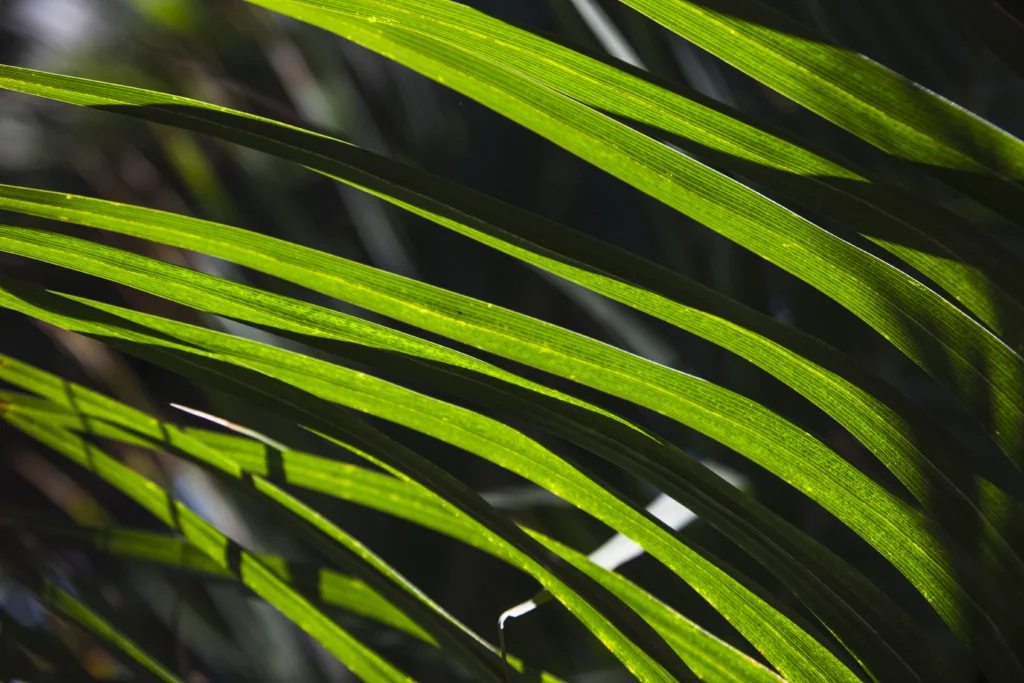
Photosynthesis stands out as nature’s most remarkable way of capturing energy. Plants create energy through an intricate dance of light, pigments, and molecular machinery, unlike animals that simply consume it.
Chlorophyll’s preference for red and blue light
Chlorophyll sits at the core of photosynthesis and comes in two main forms: chlorophyll a and chlorophyll b. These pigments have developed specific patterns to absorb light:
- Chlorophyll a absorbs maximally at 430nm (blue) and 662nm (red)
- Chlorophyll b absorbs most strongly at 460nm (blue) and 650nm (red)
These pigments work together to capture over 99% of blue and red wavelengths that hit a leaf. This selective absorption reflects billions of years of natural refinement. Red and blue light drive photosynthesis effectively because their photons carry the perfect energy levels to excite chlorophyll molecules’ electrons without causing damage.
Why is green light less absorbed?
Chlorophyll absorbs green light (500-600nm) with much less efficiency. Despite that, plants reflect only about 15% of green light, and they absorb the rest, though not as effectively.
This seeming inefficiency serves a specific purpose. Green light reaches deeper into leaf tissue and creates what scientists call the “green window”.
About 80% of green light passes through individual chloroplasts, while less than 1% of red or blue light makes it through. This penetration lets green photons reach deeper chloroplasts in the leaf, where they still help with photosynthesis.
How energy is transferred in chloroplasts
Light capture triggers a sophisticated energy transfer inside chloroplasts. These specialized organelles contain light-harvesting complex II (LHCII), which has 42 chlorophyll molecules (24 chlorophyll a and 18 chlorophyll b) and 12 carotenoid accessory pigments.
Photons hitting these pigments excite electrons that quickly move to the reaction centres. All excitations settle to the lowest energy “red” level within one picosecond. This energy then powers electron transport chains that end up driving carbon fixation in the Calvin cycle.
The process works with remarkable efficiency; more than 99% of absorbed photons lead to charge separation at reaction centres under low light conditions.
Why plants evolved to reflect green light
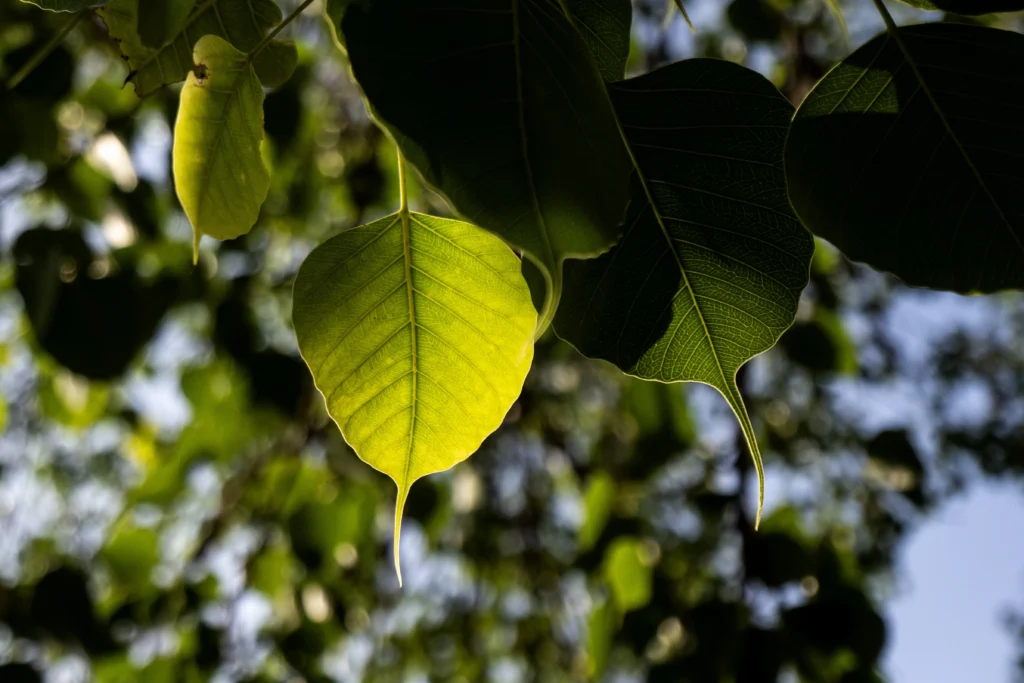
Nature rarely optimizes for peak efficiency alone. The green colour of plants shows a sophisticated balance that favours reliability over capturing every available photon.
The problem of energy noise in photosynthesis
Plants face a basic challenge in photosynthesis: light intensity constantly fluctuates in nature. These fluctuations create “noise” in the energy input signal. This makes it hard for plants to keep a steady photosynthetic output. Plants must buffer against external noise from changing light conditions and internal noise from energy processing variations, just like a power grid dealing with unexpected surges.
This challenge becomes more complex due to photosynthesis’s sequential nature. The process happens at different timescales from femtosecond photon absorption to millisecond electron transfers and minutes-long carbon fixation. Dangerous backlogs of reactive intermediates can form when energy input exceeds processing capacity.
How plants balance energy input and output
Plants have developed sophisticated ways to maintain energy balance. Their pigments absorb light at similar wavelengths to reduce internal noise. They also absorb at different rates to buffer against external changes.
Research published in Science suggests the best approach is to absorb light from the steepest parts of the solar intensity curve, the red and blue regions. This selective absorption explains why chlorophyll captures these wavelengths and reflects green.
Chloroplasts have limited pools of ATP and NADPH, which makes proper energy balance vital. Energy production and consumption mismatches would stop photosynthesis within seconds.
Evolutionary trade-offs: stability over efficiency
We learned that photosynthetic machinery developed to favour reliable output over maximum efficiency. This makes perfect ecological sense because stable energy production helps organisms survive changing conditions.
This pattern appears in a variety of photosynthetic organisms. Scientists tested their model on purple bacteria and green sulfur bacteria that live underwater. Their predictions about optimal absorption patterns matched the actual pigment activity.
Biophysicist Christopher Duffy said, “It was extraordinarily impressive to explain a pattern in biology with an incredibly simple physical model… robustness of the system seems to be the evolutionary driving force”.
Beyond green: what this means for science and technology
The science behind plants reflecting green light opens up exciting new frontiers in science and technology. This knowledge goes beyond academics and sparks innovation in many fields.
Applications in solar panel design
Nature’s way of managing light has led to the most important advances in solar technology. Scientists at Nagaoka University of Technology in Japan showed that adding anti-reflective “moth-eye” films to solar panels increases photon-to-electricity conversion by 5%. This approach copies how moths’ eyes work – they absorb maximum light while reflecting very little.
That’s what makes them great at collecting light and staying hidden from predators.
The story doesn’t end with better efficiency. Cornell University’s HelioSkin is a flexible photovoltaic system that takes its cues from sunflowers and how they track the sun.
These systems use origami techniques to adjust their shape and capture more light without mechanical tracking. This makes them perfect for curved surfaces and unusual structures.
Predicting alien plant colours
Our understanding of photosynthesis helps us imagine what plants on other worlds might look like. Scientists have created models of plant colours around different types of stars:
- F stars (hotter than our sun): Plants might look blue because screening pigments protect them from intense blue photons
- K stars (cooler): Plants would probably stay green, like on Earth
- M stars (red dwarfs): Plants could appear black to human eyes and absorb both visible and infrared light
These predictions help astronomers spot potential signs of life on exoplanets as they search for life beyond Earth.
Implications for artificial photosynthesis
Scientists working on artificial photosynthesis want to do better than nature. Caltech chemistry professor Nate Lewis puts it well: “Plants are the wrong color to be optimum energy-conversion machines. They should be black like solar cells, not green”.
The Joint Centre for Artificial Photosynthesis (JCAP) develops systems that could make liquid fuel 10 times more efficiently than plants. Plants use only 10% of the sunlight’s energy on bright days. These artificial systems could capture much more energy and provide carbon-neutral fuels for transportation that can’t run on electricity.
Scientists can design better systems by learning where nature chose stability over efficiency.
Conclusion:
Plants reflect green light because of a remarkable adaptation that values stability over maximum efficiency. This isn’t due to any shortcoming in their rise over time. Scientists found that there was a simple explanation for chlorophyll’s preference to absorb red and blue wavelengths while reflecting green. Nature’s elegant solution tackles a complex problem and helps plants maintain reliable energy production despite changing light conditions.
This light absorption pattern serves a vital purpose. Green light reaches deeper into leaf tissues and finds chloroplasts that would otherwise stay unused. These characteristics, along with the noise-reduction benefits of selective absorption, show how nature values reliability over raw efficiency when survival depends on steady energy output.
The significance of this green reflection goes way beyond the reach and influence of basic plant biology. Scientists now use these findings to create better solar panels through biomimicry. They can predict the colours of extraterrestrial vegetation and design artificial photosynthesis systems that might perform better than their natural counterparts.
Nature’s clever approach to handling light teaches us something valuable: efficiency alone doesn’t guarantee survival. The green world around us proves that adaptability and stability matter more than capturing every available photon. Plants have thrived for hundreds of millions of years with their distinctive green colour, without doubt one of nature’s most successful and beautiful compromises.






